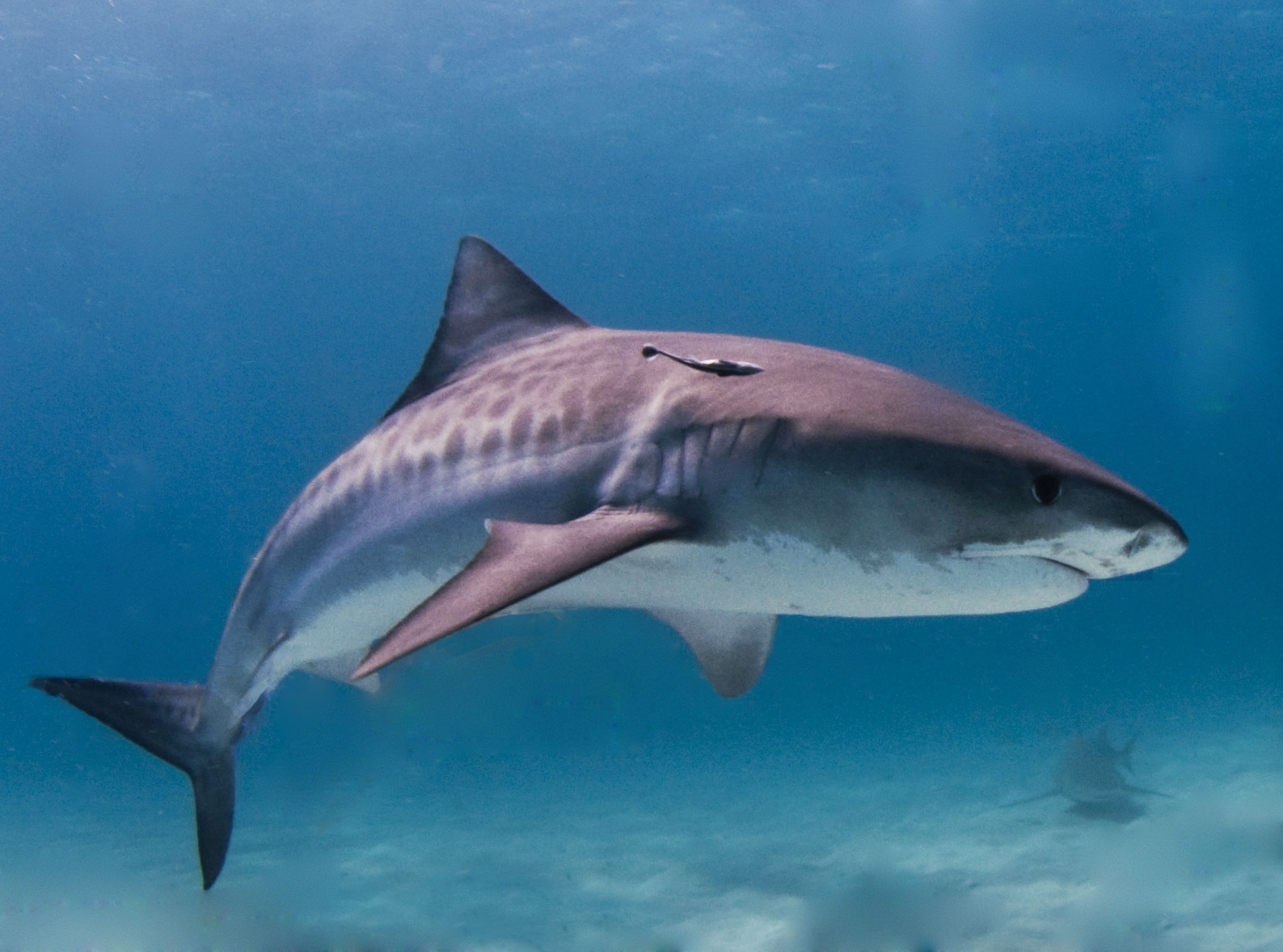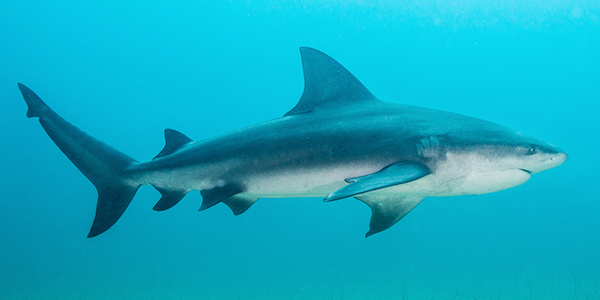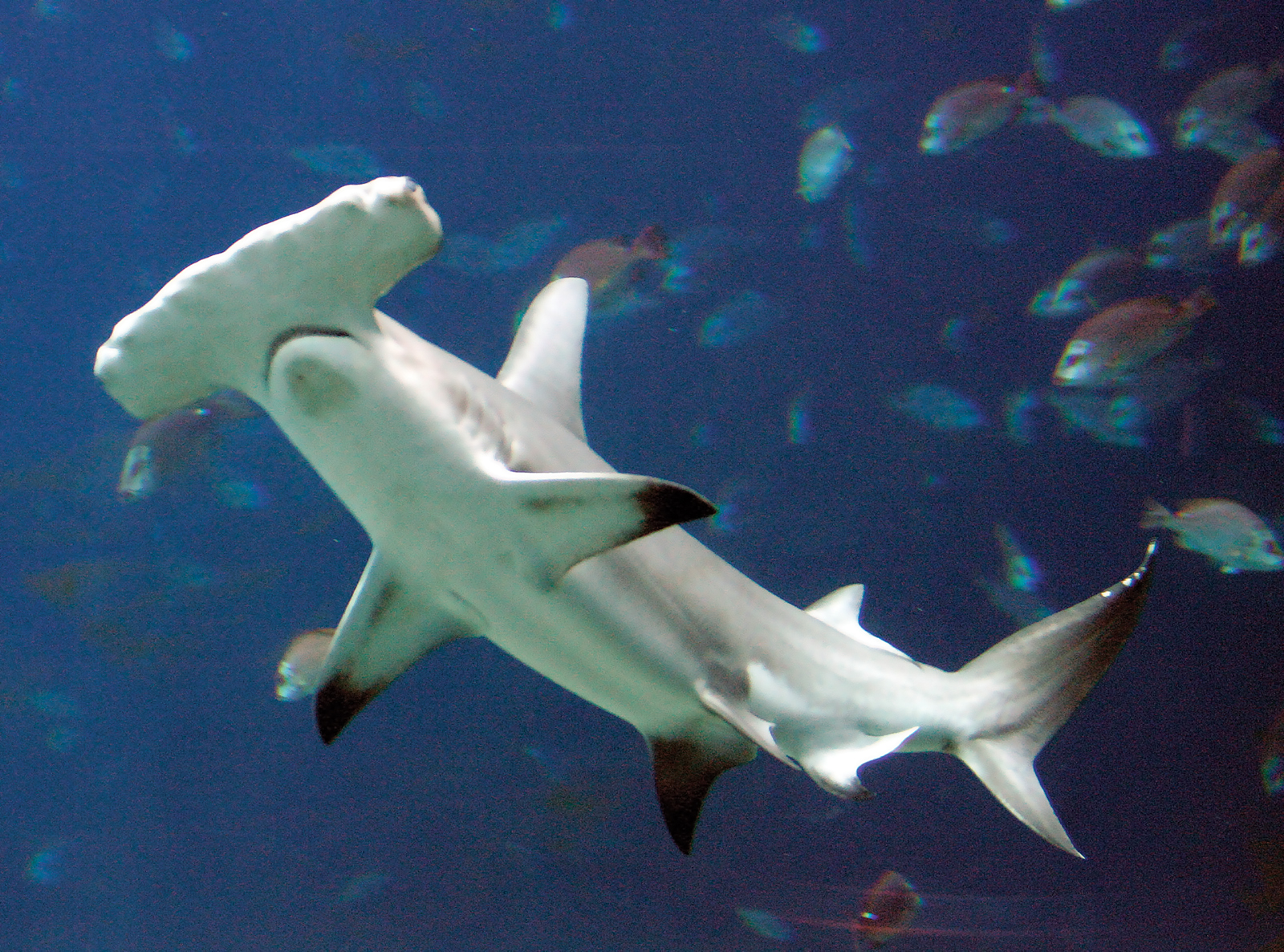Introduction to Sharks
- There are over 360 species of sharks
- They can range in size from small enough to fit in your hand to up to 65 feet
- Smallest Shark is the Pygmy Shark
- Largest Shark is the Whale Shark
- Filter feeder, feeds on plankton

- How does an almost 50 ft shark survive on plankton?
- By eating a LOT of it
- Sharks are cartilaginous fish
- their skeletons are made of cartilage
- Cartilage is more advantageous to bone because
- It’s lighter than bone
- It’s less dense
- Are more agile than bony fish
- Are fast so they can hunt well
- Sharks have uncovered gills used for respiration
- The gills extract oxygen as water passes over them
- Spiracles:
- Special slits above the eyes that allow sharks to respire while not in motion.
- A small percentage of sharks need to stay in constant motion to respire
- attached to soft tissue (NOT jaws)
- range from needlelike to large flat teeth
- used for holding on and shredding into prey (NOT chewing!)
- Sharks have multiple rows of teeth that are replaced often
- They can have about 25,000 to 30,000 teeth in one lifetime
- some replace teeth every 8-10 days
- others every few months
- Lifespan varies by species
- Most live about 20 – 30 years
- It is thought that the whale shark can live over 100 years
- Incredible sense of smell
- They can detect amounts of blood as small as 1 ppm (part per million)
- Rely on sense of smell to locate prey
- Sense organ used to detect motion or vibrations in the water
- Allow sharks to sense minute electricity caused by muscles and nerves in prey
- Sharks have eyelids but do not blink
- Water surrounding eye cleans it
- Have a membrane over eye that protects when being attacked or when hunting
- Great White Sharks roll eyes back when attacking
- Scientists unsure
- Possible they sleep in a similar manner to dolphins
- Half the brain sleeps at a time
- 2010 - 79 attacks, 6 fatalities
- 2015 - 98 attacks, 6 fatalities (largest on record)
- 2017 - 82 attacks, 5 fatalities
- Majority occur in the United States
- More people die from lightning strikes and dog attacks each year
- Sharks involved in attacks
- Three types of sharks have been involved in a significant amount of attacks
- Great White
- Tiger Shark
- Bull Shark

- Great Whites are generally about 13-16 ft long and weigh 1500 - 2450 lbs
- Found in waters between 54 oF and 75 oF
- Countershading
- White underside and gray dorsal side
- Difficult to see when looking at horizontally
- When seen from above, gray blends in with the water
- When seen from below, white blends in with surface of water
- Sting rays, tuna, smaller sharks, dolphins, seals, sea lions
- Shark attacks most often occur in the morning, within 2 hours after sunrise
- Hard to see a shark close to the bottom
- Attack from below at fast speeds

- Average 11 feet and 850 - 2000 lbs
- Commonly found around islands in the central Pacific
- Dark spots and stripes are prominent in young sharks and fade as the shark matures
- Hunting habits
- Teeth can bite through bone and turtle shells
- Known to circle its prey and even study it by prodding it with its snout
- Tiger sharks devour their entire prey when attacking
- Tiger sharks have become a problem in Hawaii
- Hunted to help control attacks, but no decrease occurred
- Considered sacred by native Hawaiians

- Dwell in shallow water, possibly posing highest threat to humans
- Can tolerate freshwater
- Size
- Males: 6.8 ft, about 200 lbs
- Females: 11.5 ft, about 700 lbs
- Bump and Bite Technique
- Shark circles prey often bumping them before the actual attack.
- They are extremely territorial and will attack other animals that enter their territory.

- Habitat: Shallow tropical and warm temperature waters
- Diet: Stingrays, other small sharks, fish, crustaceans
- Size: 12 - 20 ft.
- Attacks: 18 (0 fatal)
- Hammerheads have small mouths and seem to do a lot of bottom-hunting. (Stingrays!)
- Their wide-set eyes give them a better visual range than most other sharks.
- Hammerheads are also known to form schools during the day, sometimes in groups of over 100
- Why do sharks attack people?
- Shark mistakes a person in the water as a seal when looking from below the waters surface
- Provoked by sailors
- Curiosity
- Sharks typically bite once and then swim away
- Humans do not taste like their typical prey
- Return to the prey after it exhausts itself
- Sharks will not attack when dolphins are around
- Scientists unsure why this phenomenon occurs
- Avoid water during darkness or twilight hours
- Do not enter water if bleeding from an open wound
- Do not wear shiny jewelry – resembles fish scales
- Avoid areas near commercial fishing
- Avoid murky waters
- Do not splash a lot
- Hit back in sensitive areas such as the eyes and gills
- Shows shark you are not defenseless




